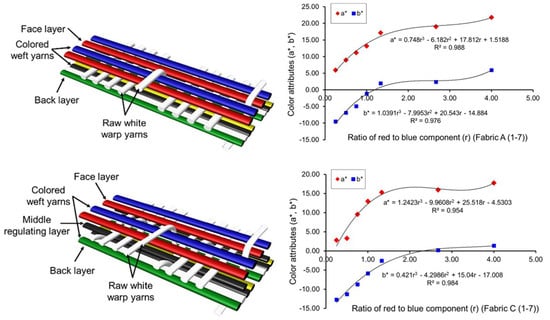Color Attributes of Colored-Yarn Mixed Woven Fabrics Made of Raw-White Warps and Multicolored Wefts and Based on Weft-Backed Structures
Abstract
:1. Introduction
2. Experimental Details
2.1. Design of Weft Yarn Colors and Weft-Backed Structures
2.2. Fabric Sample Preparation
2.3. Characterization of Color Attributes of Fabric
3. Results and Discussion
3.1. Effect of Proportion of Colored Yarns on Mixed Color Attributes of Fabric
3.2. Effects of Weft-Backed Structure on Mixed Color Attributes of Fabric
3.3. Effects of Weft Density of Fabric on Mixed Color Attributes of Fabric
3.4. Comparison of Mixed Color Attributes between Fabrics with and without Mixing Component of Black Yarn
4. Conclusions
Acknowledgments
Author Contributions
Conflicts of Interest
References
- Jiang, S.Q.; Hua, T. Digital Jacquard: Mythologies; The Hong Kong Polytechnic University: Hong Kong, China, 2013. [Google Scholar]
- Dawson, R.M. Color and weave effects with small repeat sizes. Text. Res. J. 2002, 72, 854–863. [Google Scholar] [CrossRef]
- Osaki, K. Reproduction of various colors on jacquard textiles by only eight kinds of color wefts. Proceedings of SPIE, 9th Congress of the International Color Association, Rochester, NY, USA, 2–2 April 2001; Volume 4421, pp. 740–744. [Google Scholar]
- Osaki, K. High Quality color reproduction on jacquard silk textile from digital color images. AUTEX Res. J. 2003, 3, 173–179. [Google Scholar]
- Dimitrovski, K.; Gabrijelcic, H. Corrections of color values of woven fabrics using changes to constructional parameters. AUTEX Res. J. 2004, 4, 187–193. [Google Scholar]
- Gabrijelcic, H.; Dimitrovski, K. Influence of yarn count and warp and weft thread density on color values of woven surface. Fibers Text. East. Eur. 2004, 12, 32–39. [Google Scholar]
- Gabrijelcic, H.; Dimitrovski, K. Use of regression methods for determining the relation between theoretical-linear and spectrophotometrical colour values of bicolour woven structures. Color. Technol. 2009, 125, 74–85. [Google Scholar] [CrossRef]
- Chae, Y.; Xin, J.H.; Hua, T. Color prediction models for digital jacquard woven fabrics. Color. Res. Appl. 2016, 41, 64–71. [Google Scholar] [CrossRef]
- Chae, Y.; Xin, J.H.; Hua, T. Color prediction of yarn-dyed woven fabrics-model evaluation. J. Korean Soc. Cloth. Text. 2014, 38, 347–354. [Google Scholar] [CrossRef]
- Chae, Y.; Xin, J.H.; Hua, T. Color prediction of woven structure for digital jacquard fabrics: Model evaluation. In Proceedings of the Fiber Society International Fiber Conference 2014, Liberec, Czech Republic, 21–23 May 2014. [Google Scholar]
- Chae, Y.; Xin, J.H.; Hua, T. Color appearance modeling of bicolor striped woven fabrics considering neighboring color effects. Color. Res. Appl. 2017, 42, 512–521. [Google Scholar] [CrossRef]
- Chae, Y.; Hua, T.; Xin, J.H. Three-dimensional color prediction modeling of single- and double-layered woven fabrics. Color. Res. Appl. 2017, 43, 130–141. [Google Scholar] [CrossRef]
- Li, Q.Z.; Zhang, F.Y.; Jin, X.K.; Zhu, C.Y. Optimal yarn colour combinations for full-colour fabric design and mixed-colour chromaticity coordinates based on CIE chromaticity diagram analysis. Color. Technol. 2014, 130, 437–444. [Google Scholar] [CrossRef]
- Mathur, K.; Hinks, D.; Seyam, A.M.; Donaldson, R.A. Towards automation of color/weave selection in jacquard design: Model verification. Color. Res. Appl. 2009, 34, 225–232. [Google Scholar] [CrossRef]
- Ng, M.C.F.; Zhou, J. Innovative Layered-combination mode for digital jacquard fabric design. Text. Res. J. 2009, 79, 737–743. [Google Scholar] [CrossRef]
- Wang, J.C.; Yang, B.; Huang, B.H.; Jin, Z.M. Design and development of polymeric optical fiber jacquard fabric with dynamic pattern display. Text. Res. J. 2012, 82, 967–974. [Google Scholar] [CrossRef]
- Grosicki, Z.J. Watson’s Textile Design and Colour: Elementary Weaves and Figured Fabrics; Woodhead Publishing Limited: London, UK, 1975; pp. 130–149. [Google Scholar]
- Koenig, B. Color Workbook, 4th ed.; Prentice Hall: Upper Saddle River, NJ, USA, 2013. [Google Scholar]
- Oleari, C.; Pavesi, M. Grassmann’s laws and individual color-matching functions for non-spectral primaries evaluated by maximum saturation technique in foveal vision. Color. Res. Appl. 2008, 33, 271–281. [Google Scholar] [CrossRef]

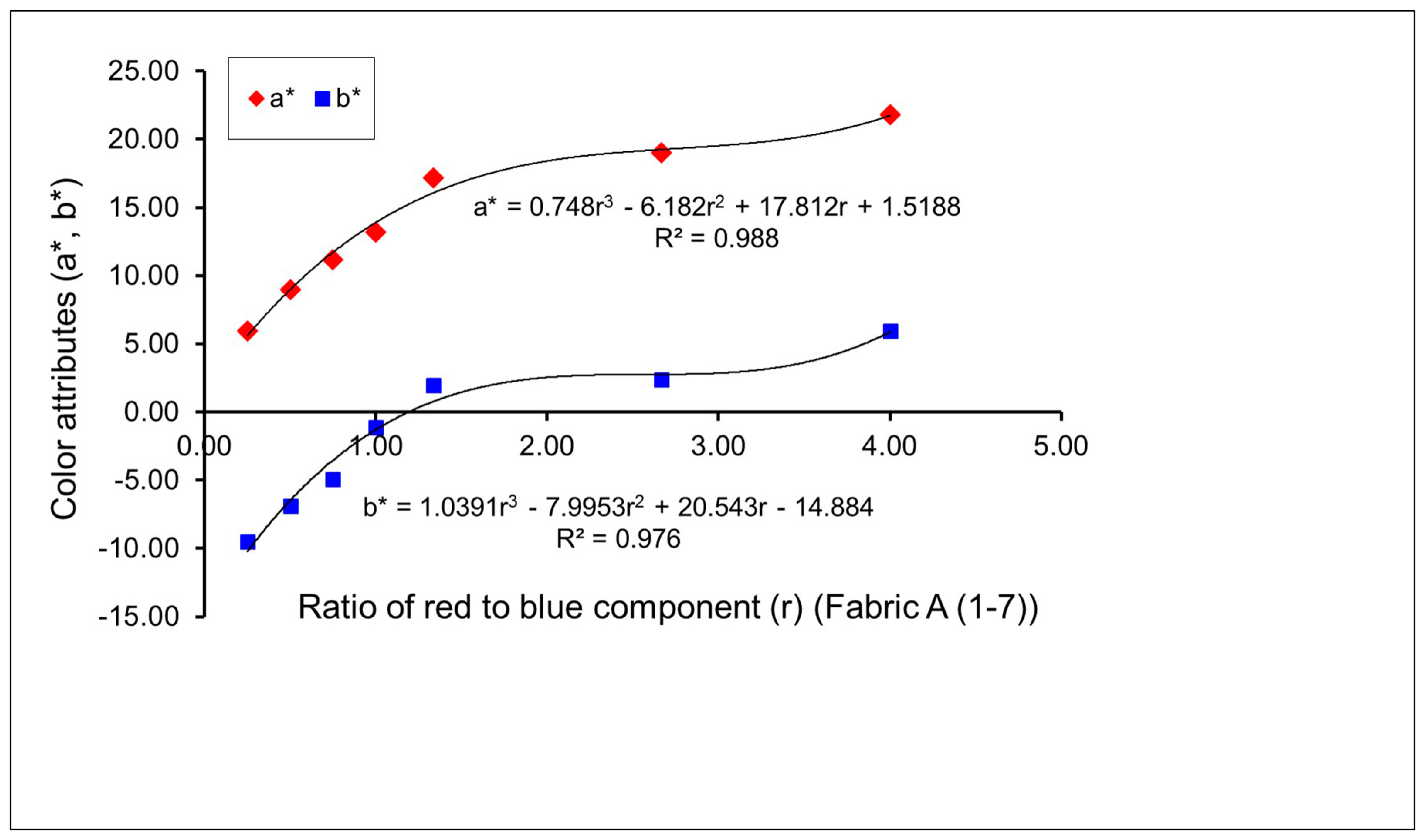
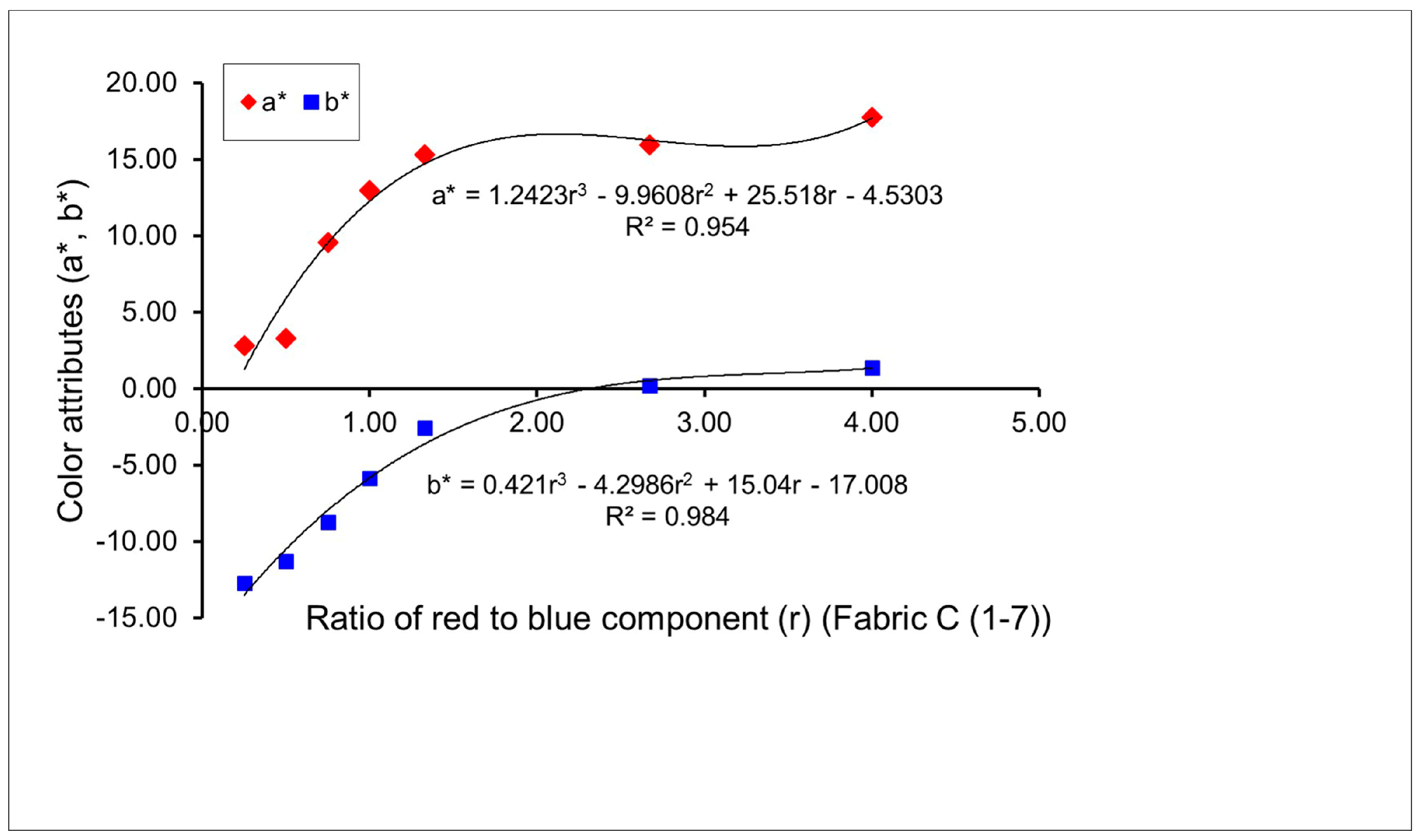
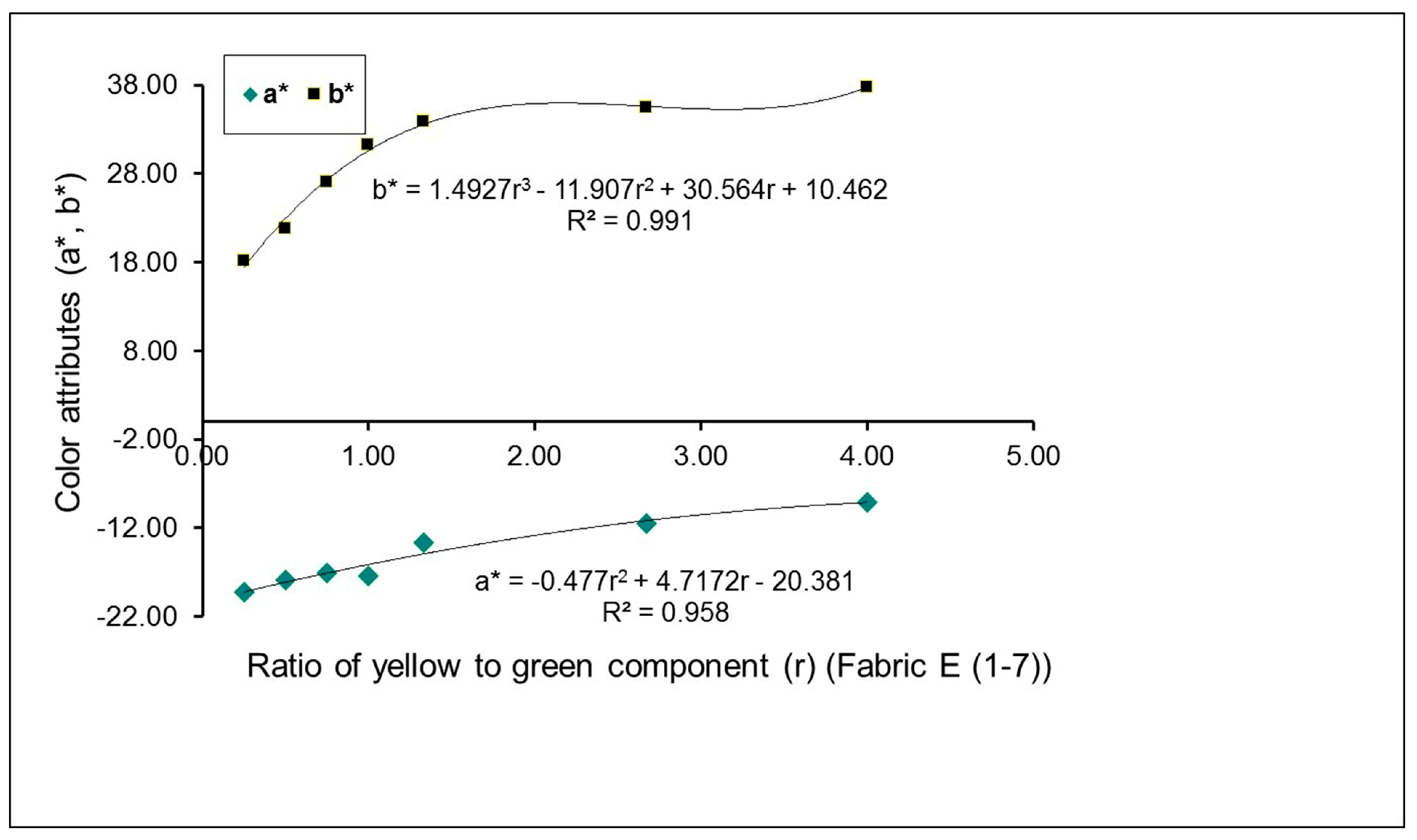
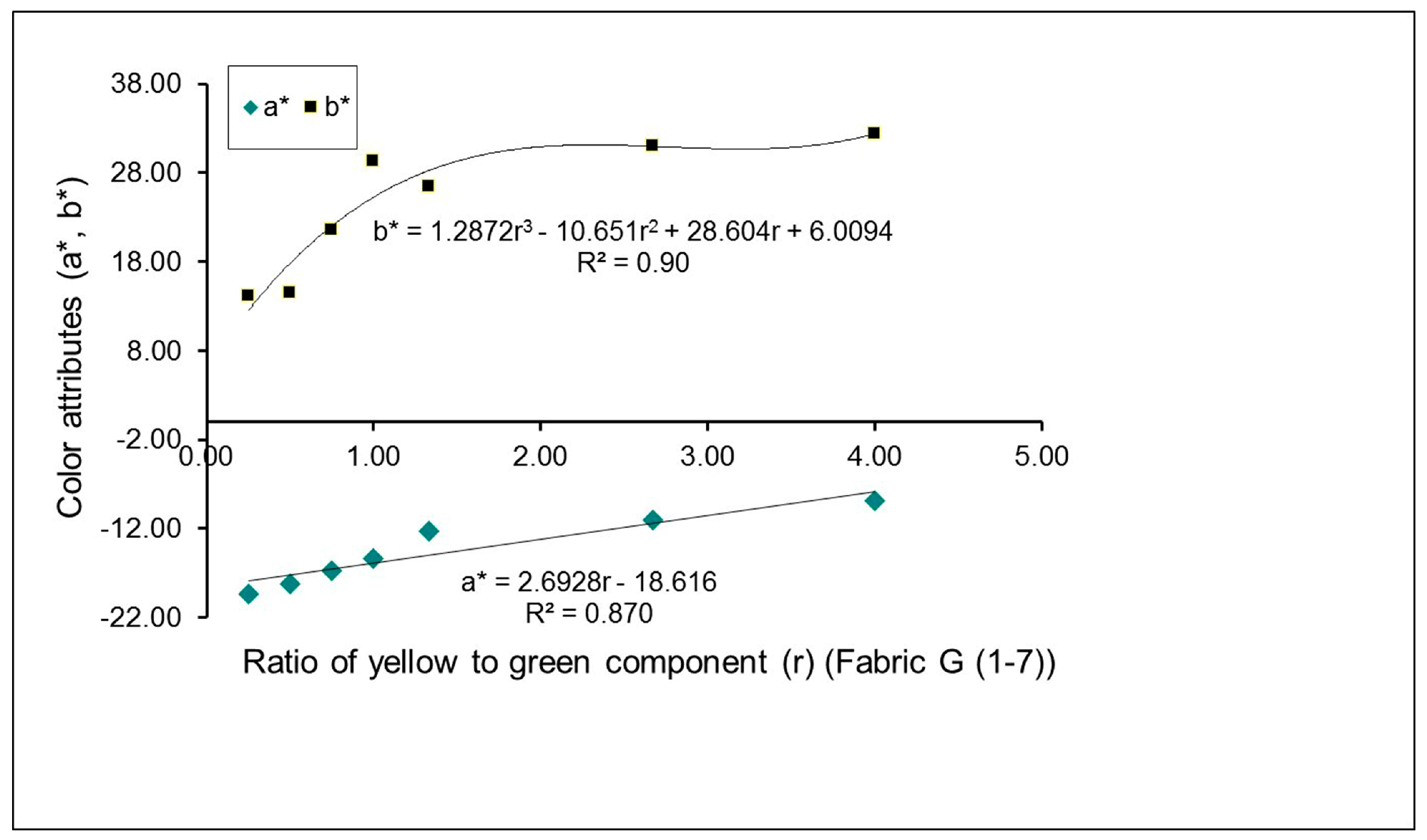


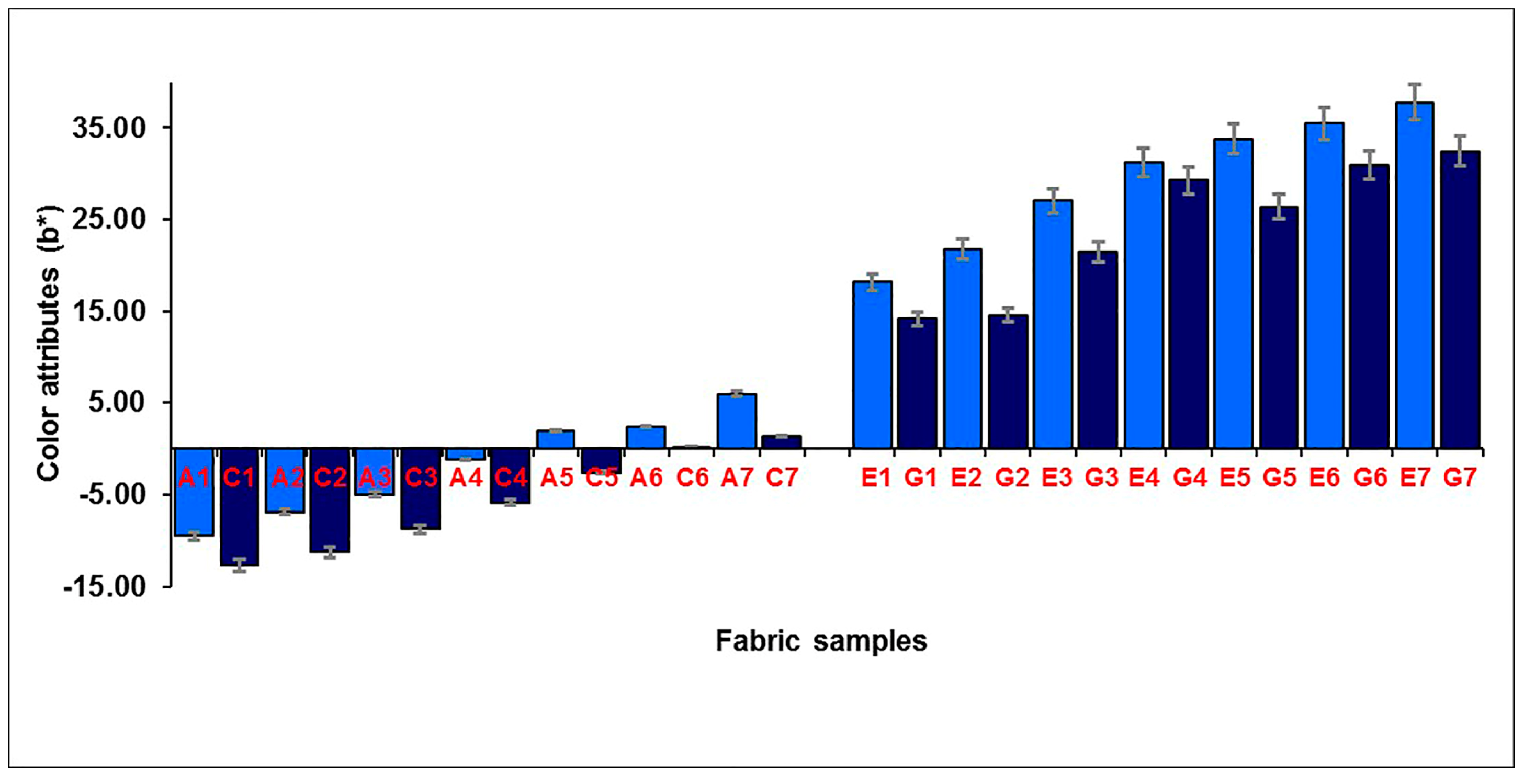

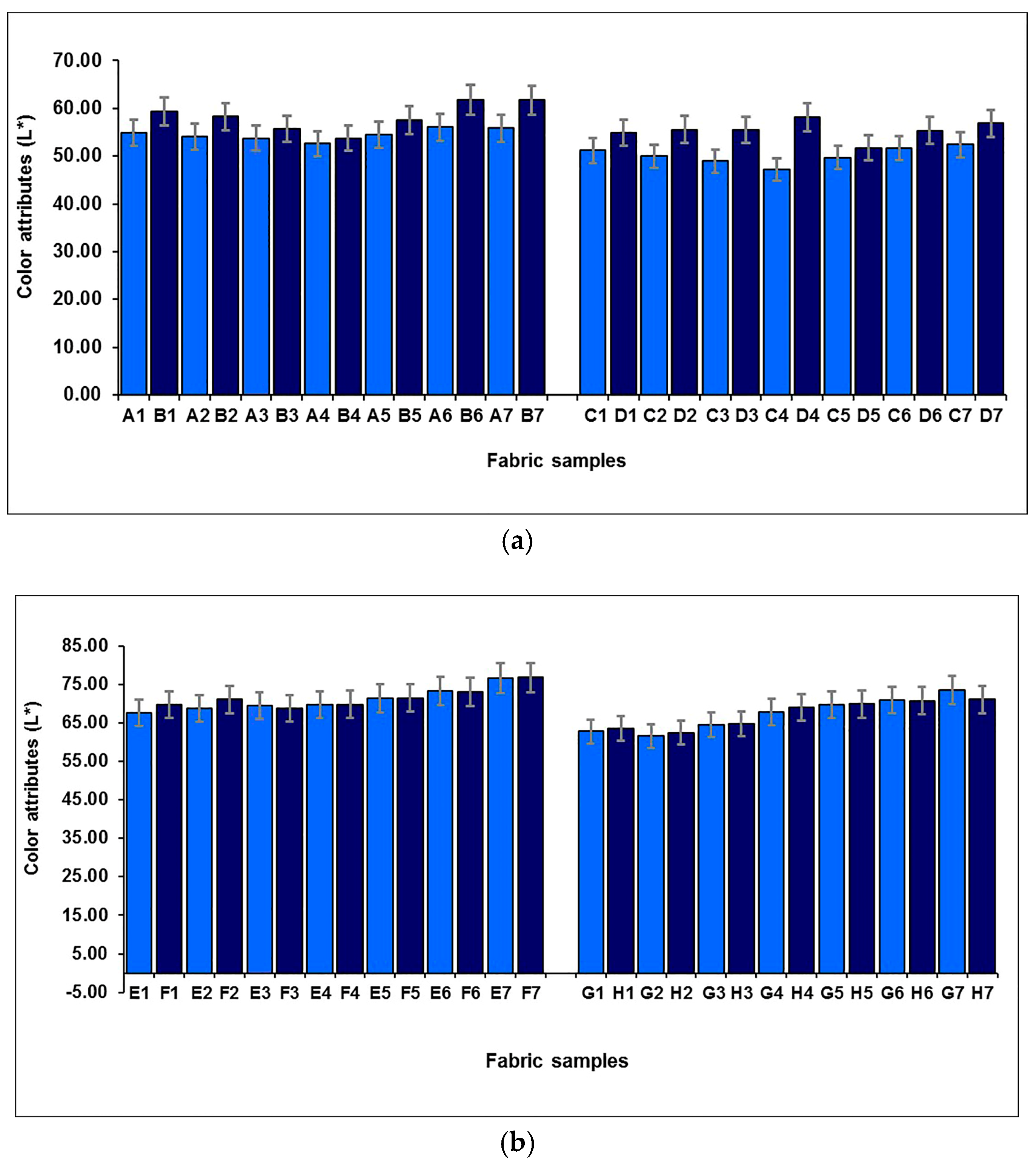
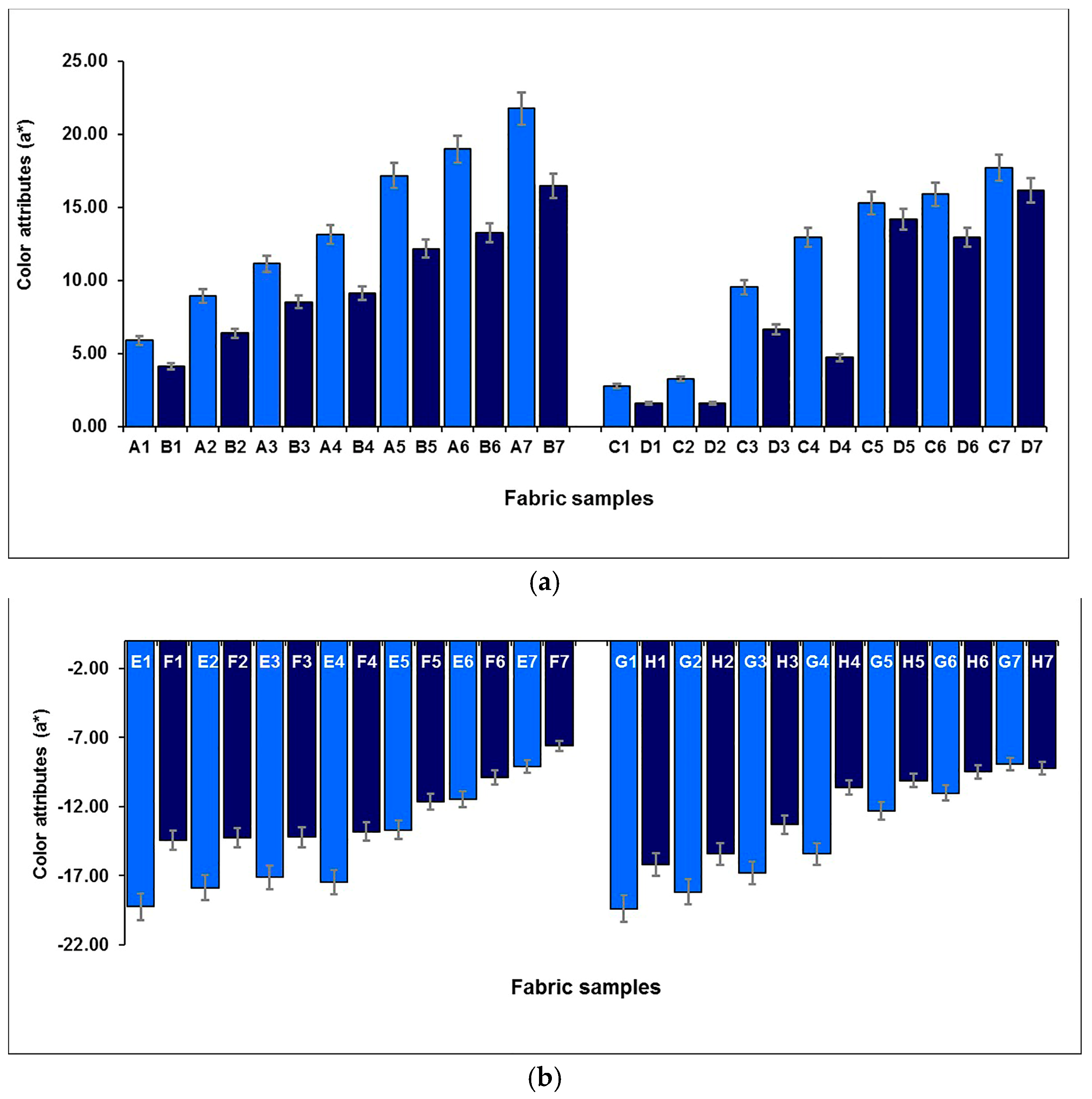
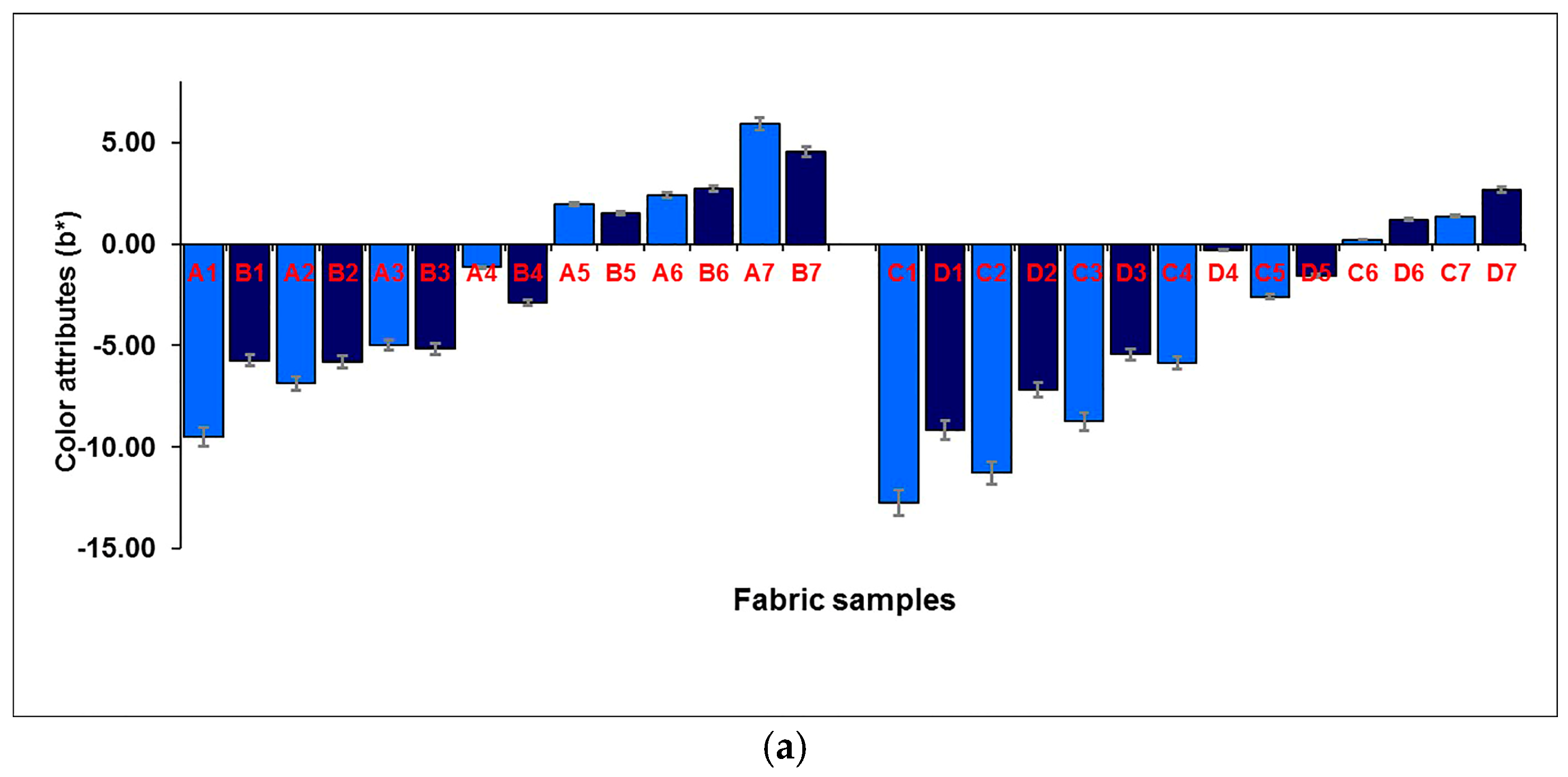

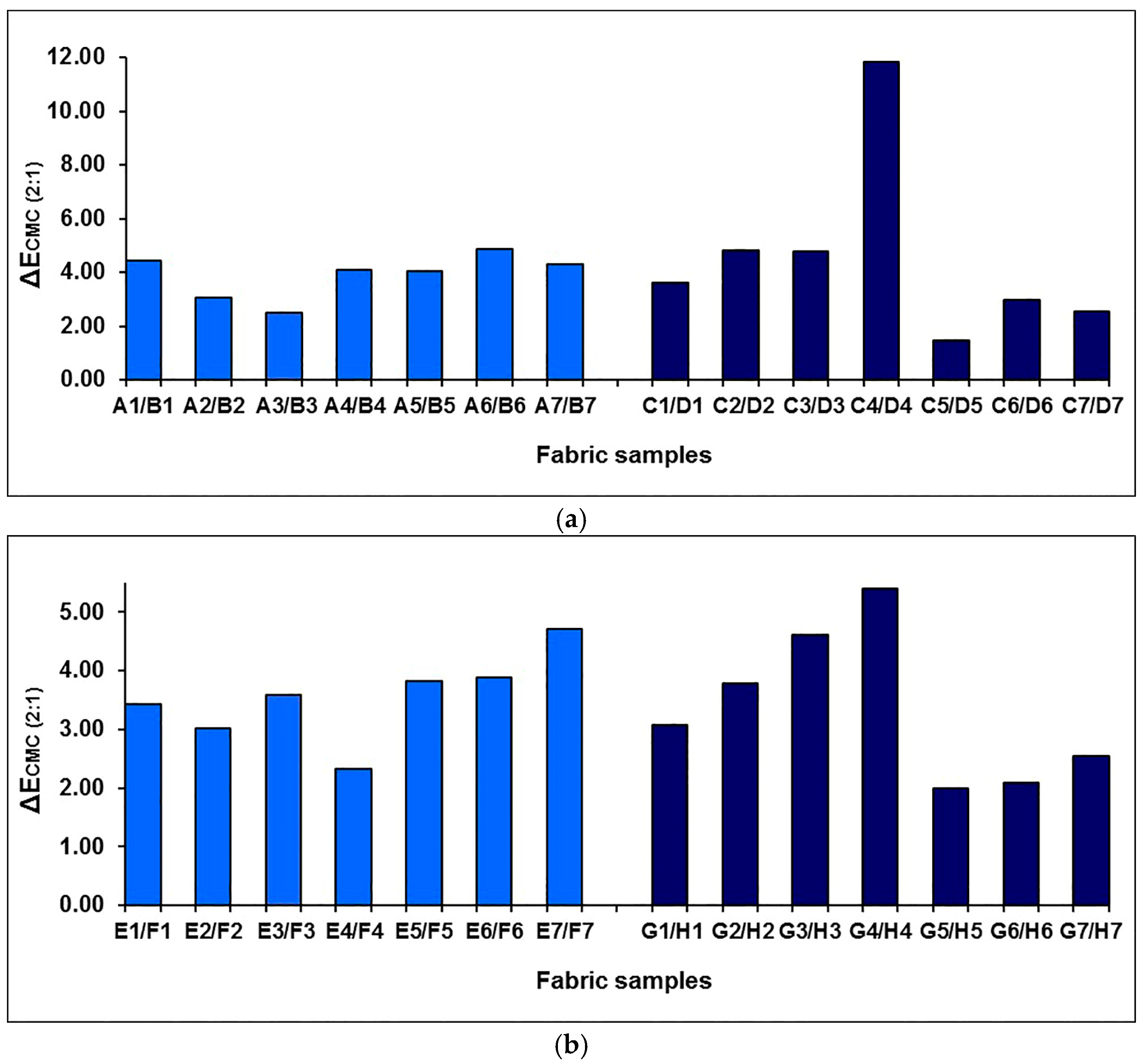

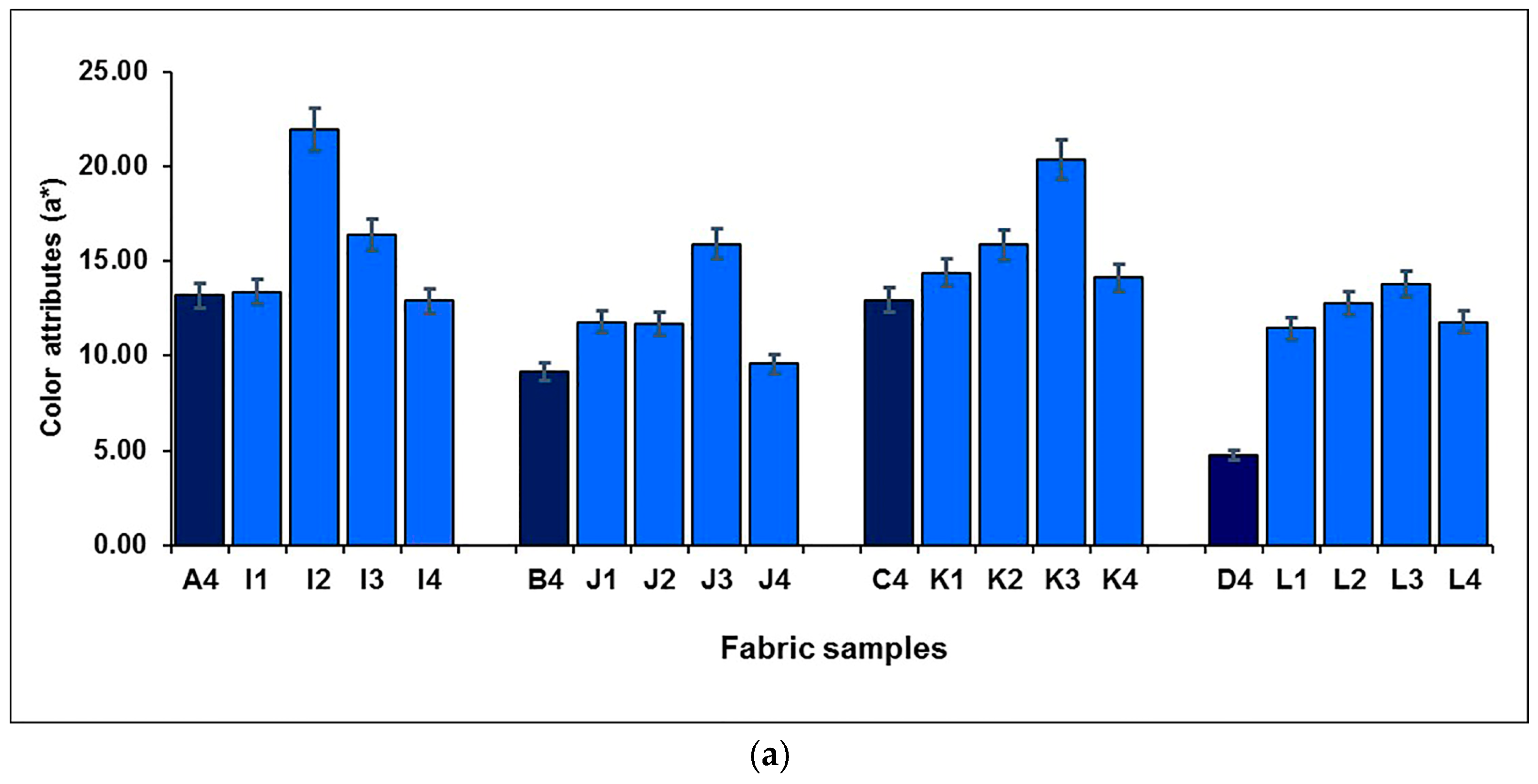
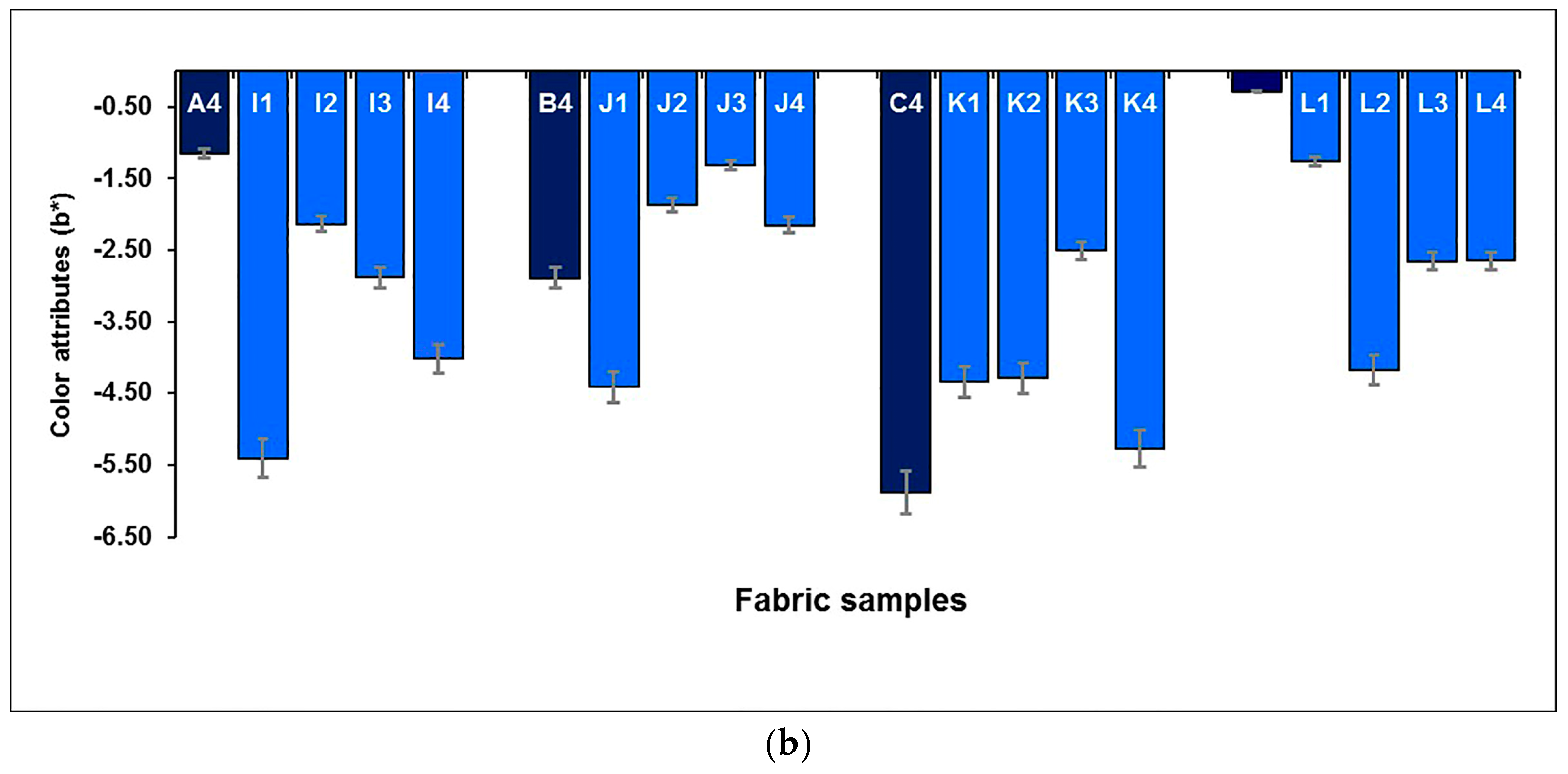
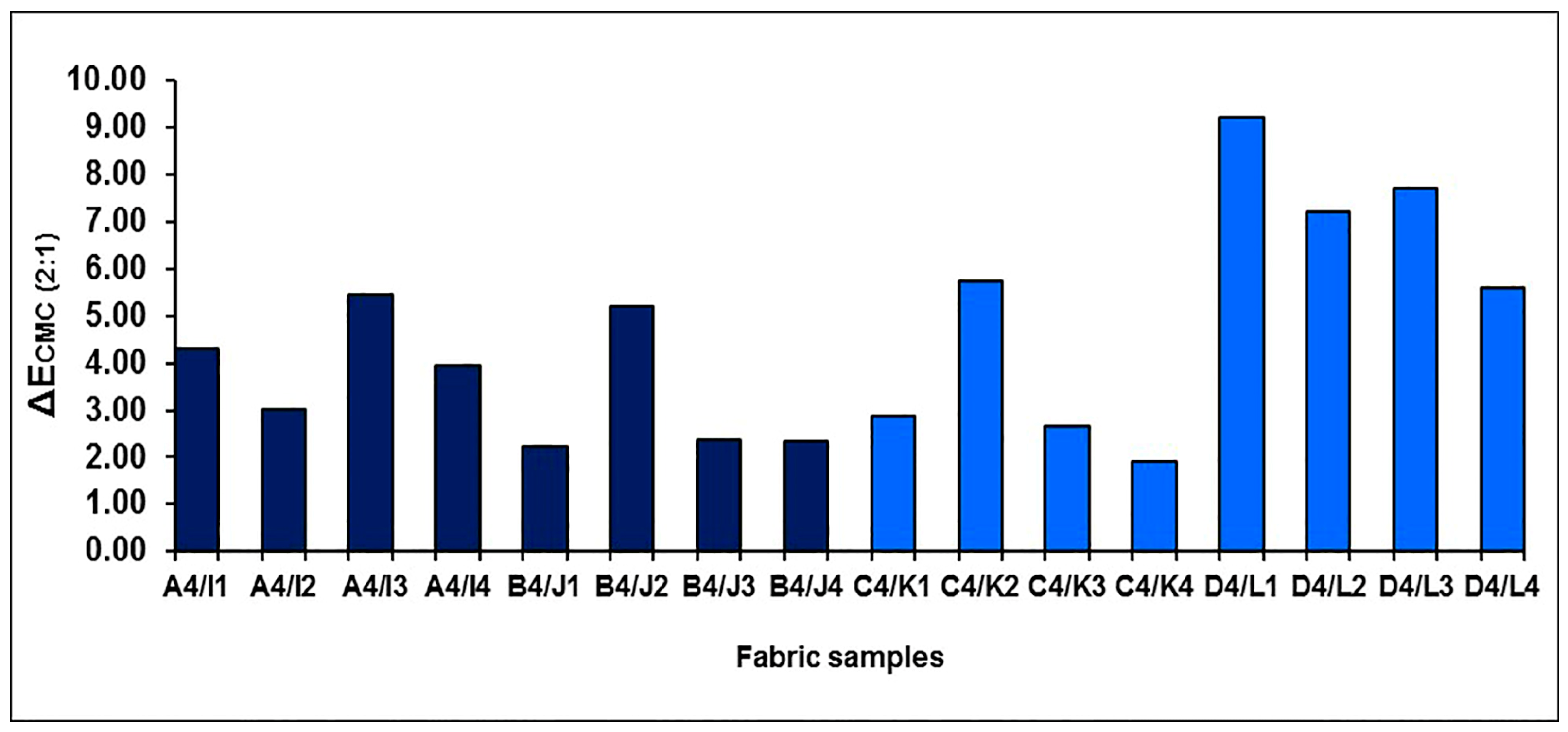
| Weave code | Weft-backed structure without regulating layer | Weave code | Weft-backed structure with regulating layer | Weave code | Weft-backed structure without regulating layer | Weave code | Weft-backed structure with regulating layer |
|---|---|---|---|---|---|---|---|
| N(BL+R)(1) |  | M(BL+R)(1) |  | N(G+Y)(1) |  | M(G+Y)(1) |  |
| N(BL+R) (2) |  | M(BL+R)(2) |  | N(G+Y) (2) |  | M(G+Y)(2) |  |
| N(BL+R)(3) |  | M(BL+R)(3) |  | N(G+Y)(3) |  | M(G+Y)(3) |  |
| N(BL+R)(4) |  | M(BL+R)(4) |  | N(G+Y)(4) |  | M(G+Y)(4) |  |
| N(BL+R)(5) |  | M(BL+R)(5) |  | N(G+Y)(5) |  | M(G+Y)(5) |  |
| N(BL+R)(6) |  | M(BL+R)(6) |  | N(G+Y)(6) |  | M(G+Y)(6) |  |
| N(BL+R)(7) |  | M(BL+R)(7) |  | N(G+Y)(7) |  | M(G+Y)(7) |  |
| Weave code | Weft-backed structure without regulating layer | Weave code | Weft-backed structure without regulating layer | Weave code | Weft-backed structure with regulating layer | Weave code | Weft-backed structure with regulating layer |
|---|---|---|---|---|---|---|---|
| N(BL+R+BK)(1) |  | N(BL+R+BK)(3) |  | M(BL+R+BK)(1) |  | M(BL+R+BK)(3) |  |
| N(BL+R+BK)(2) |  | N(BL+R+BK)(4) |  | M(BL+R+BK)(2) |  | M(BL+R+BK)(4) |  |
| Fabric code | Yarn linear density (denier) | Weft yarn color mixing | Weave code | Fabric density (threads/cm) | ||
|---|---|---|---|---|---|---|
| warp | weft | warp | weft | |||
| A (1–7) | 100 | 175 | Blue + Red | N(BL+R) (1–7) (without regulating layer) | 47 | 58 |
| B (1–7) | 100 | 175 | Blue + Red | N(BL+R) (1–7) (without regulating layer) | 47 | 42 |
| C (1–7) | 100 | 175 | Blue + Red | M(BL+R)(1–7) (with regulating layer) | 47 | 68 |
| D (1–7) | 100 | 175 | Blue + Red | M(BL+R)(1–7) (with regulating layer) | 47 | 49 |
| E (1–7) | 100 | 175 | Green + Yellow | N(G+Y) (1–7) (without regulating layer) | 47 | 58 |
| F (1–7) | 100 | 175 | Green + Yellow | N(G+Y) (1–7) (without regulating layer) | 47 | 42 |
| G (1–7) | 100 | 175 | Green + Yellow | M(G+Y) (1–7) (with regulating layer) | 47 | 68 |
| H (1–7) | 100 | 175 | Green + Yellow | M(G+Y) (1–7) (with regulating layer) | 47 | 49 |
| I (1–4) | 100 | 175 | Blue + Red + Black | N(BL+R+BK) (1–4) (without regulating layer) | 47 | 58 |
| J (1–4) | 100 | 175 | Blue + Red + Black | N(BL+R+BK) (1–4) (without regulating layer) | 47 | 42 |
| K (1–4) | 100 | 175 | Blue + Red + Black | M(BL+R+BK) (1–4) (with regulating layer) | 47 | 68 |
| L (1–4) | 100 | 175 | Blue + Red + Black | M(BL+R+BK) (1–4) (with regulating layer) | 47 | 49 |
| Fabric picture |  |  |  |  |
| Fabric code | C2 | C6 | G2 | G6 |
| Fabric picture |  |  |  |  |
| Fabric code | D2 | D6 | G3 | E3 |
© 2018 by the authors. Licensee MDPI, Basel, Switzerland. This article is an open access article distributed under the terms and conditions of the Creative Commons Attribution (CC BY) license (http://creativecommons.org/licenses/by/4.0/).
Share and Cite
Hua, T.; Tang, L.Y.; Chiu, W.Y.; Tian, X. Color Attributes of Colored-Yarn Mixed Woven Fabrics Made of Raw-White Warps and Multicolored Wefts and Based on Weft-Backed Structures. Polymers 2018, 10, 146. https://doi.org/10.3390/polym10020146
Hua T, Tang LY, Chiu WY, Tian X. Color Attributes of Colored-Yarn Mixed Woven Fabrics Made of Raw-White Warps and Multicolored Wefts and Based on Weft-Backed Structures. Polymers. 2018; 10(2):146. https://doi.org/10.3390/polym10020146
Chicago/Turabian StyleHua, Tao, Lau Yiu Tang, Wing Yan Chiu, and Xiao Tian. 2018. "Color Attributes of Colored-Yarn Mixed Woven Fabrics Made of Raw-White Warps and Multicolored Wefts and Based on Weft-Backed Structures" Polymers 10, no. 2: 146. https://doi.org/10.3390/polym10020146




